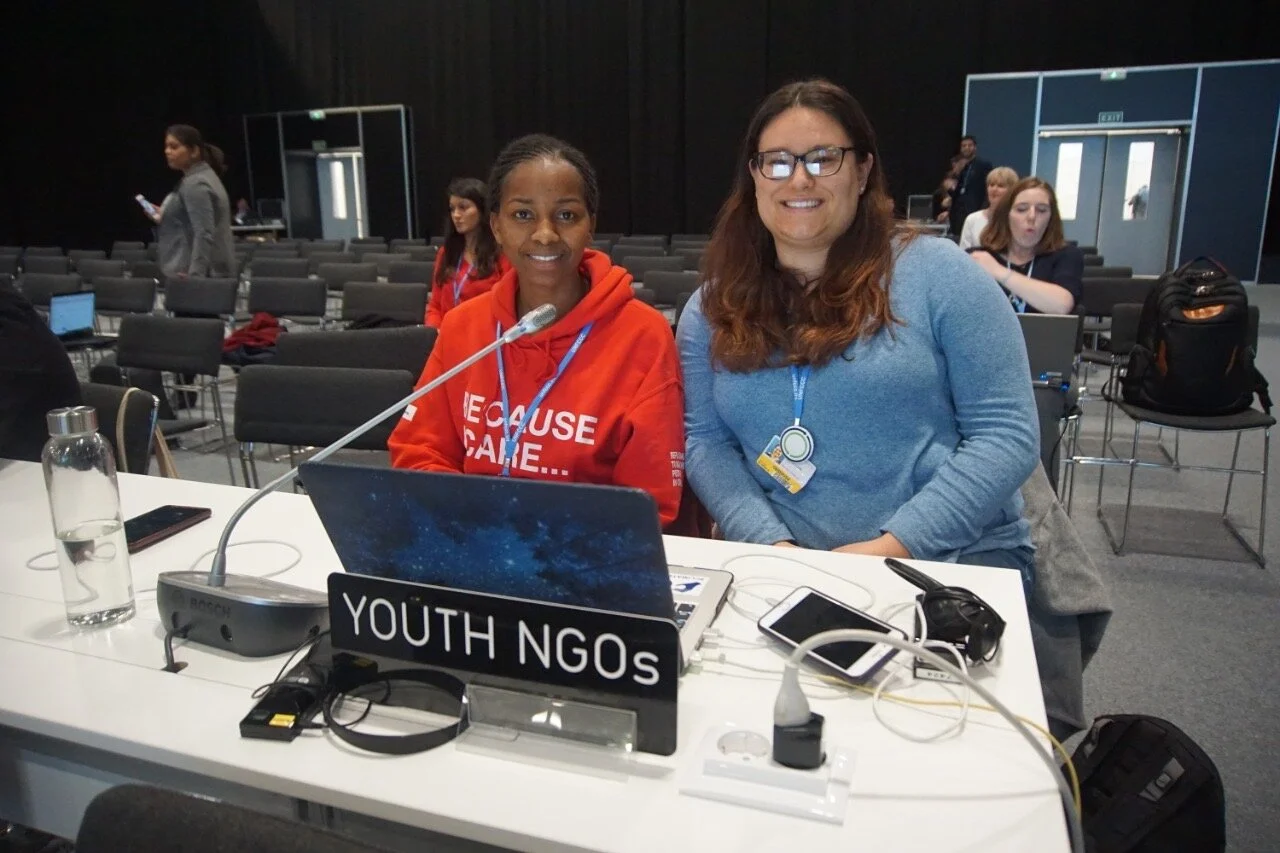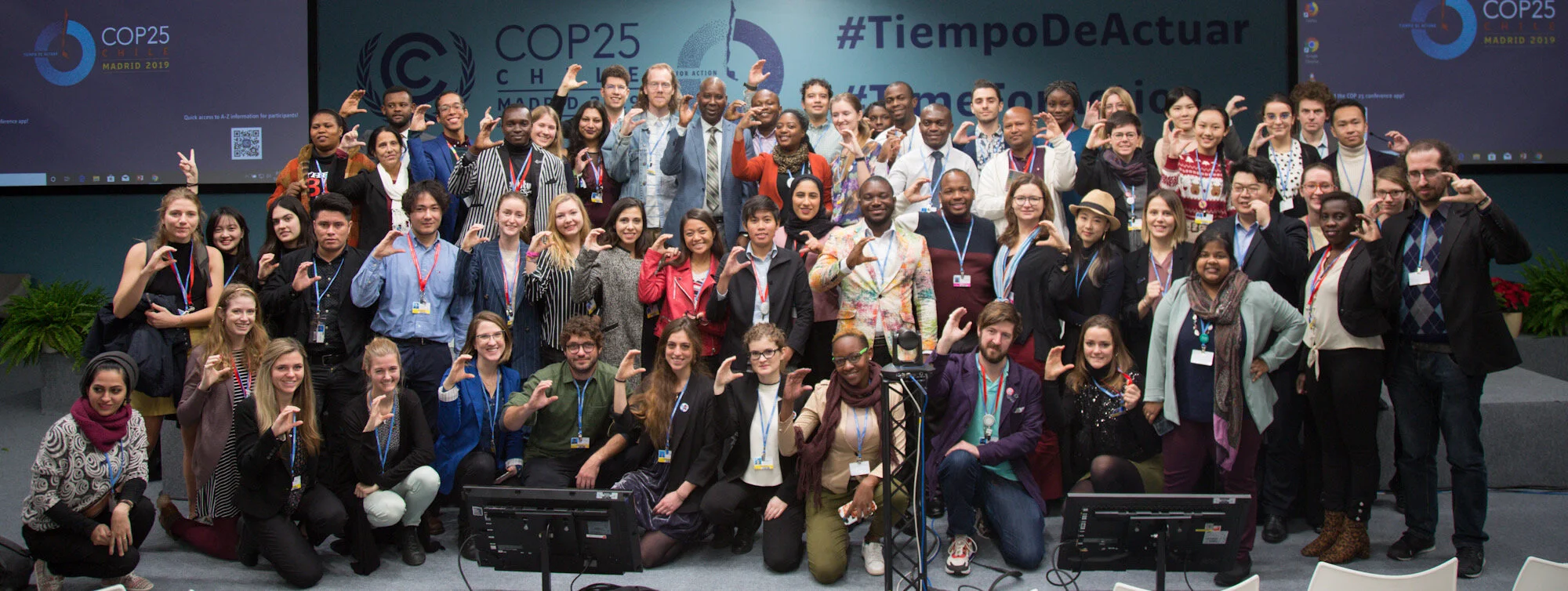What Does Youth Advocacy in International Climate Policy Look Like and How Has it Changed With COVID-19?
by Sydney Welter, CAAP Program Director
There are many ways in which young people from around the world participate in advocacy in international climate policy, as one piece of overall youth climate action. The main mechanism for the negotiation of international climate policies, such as the Paris Agreement, is through the United Nations Framework Convention on Climate Change (UNFCCC). The UNFCCC and negotiators from 197 Parties (countries and the European Union), as well as representatives from NGOs and other stakeholders, meet at the annual negotiations known as the Conference of the Parties (COP). In-person civil society advocacy, including youth-led action, is a critical part of each COP to build accountability for government action.
COP26, which is currently set to occur in Glasgow in November 2021, was postponed by a year due to COVID-19. There is still great uncertainty about COP26 and the extent of civil society participation. This has led to many, both intentional and unintentional, consequences and shifts in advocacy. It is essential to build youth power to influence change during this time. Here’s a look at some of the key opportunities for youth advocacy in international policy.
Constituencies
Under the UNFCCC, there are a number of officially-recognized constituencies representing NGOs with shared goals. Youth NGOs (YOUNGO) are the main youth-centered group of young civil society advocates in the international climate policy space, supporting climate advocates under the age of 35. Young people also participate in many of the other constituencies, which include the Women and Gender Constituency, the Environmental NGOs (ENGO), Research and Independent NGOs (RINGO - includes universities), and the Indigenous Peoples Organizations. These constituencies work year-round to advocate for their needs in climate action, frequently including workgroups on specific issues within climate change (e.g. oceans, or gender justice).
How to Participate: You can get involved with a constituency like YOUNGO (http://www.youngo.uno/) or Climate Action Network (https://climatenetwork.org/) directly or by finding an organization in your country already engaged with the constituency. If you’re a student at a university, ask if your university is already involved with or would be willing to pursue accreditation with the UNFCCC.
Advocacy in Person
At COP, young people participate in a variety of ways. This can be formal; some countries like Chile and the Netherlands have pathways for young people to join their official delegation to COPs. This can also be through NGO advocacy, through meeting with country negotiators, building power with other organizations, hosting events and exhibits, and more. This can also be through direct action. Youth leaders host sit-ins and rallies and lead art builds (https://artivistnetwork.org/). They also lead protests. For example, at COP25, Indigenous youth led protests against the failure of governments at the negotiations to prioritize human rights.
In-person advocacy at COP has so far not been possible in 2020 and 2021 due to COVID-19. As the pandemic continues and disparities in vaccine access grow around the world, there is huge uncertainty about civil society participation in COP26. While virtual convenings can offer some accessibility advantages and permit more people to participate, they also can create exacerbate inequities due to issues like internet access. For example, Alvaro Alfaro Morales notes one such situation in UN meetings: “I have seen people that started to talk about a very interesting topic or opinion and went down because of internet connection… later the meeting restarts without the person, so her voice is not heard.” So while virtual participation can be one important component of advocacy, it’s vital that in-person advocacy be able to continue in international convenings when possible.
How to Participate: Attending COP in-person can be challenging, especially for young people, due to barriers from attaining official accreditation to affording international travel, if the COP is hosted far away; most recent COPs have been hosted in Europe. Getting involved with an organization already involved, as mentioned in the previous section, is the best approach. Some other opportunities, such as YOUNGO’s Global South Scholarship, support young people in getting accreditation and funding. However, local action is always the core of climate action, and there are many ways to advocate at home to influence climate policy. Also, due to COVID-19 limitations and ongoing crackdowns on civil society advocacy at the UN, it’s critical that NGOs demand that COP26 include the full participation of civil society representatives.
Advocacy at Home
Due to injustices and inequities in UN processes, as well as often heavy restrictions of civil society advocacy at COP, and like all aspects of climate action, local leadership is the most vital component of creating change. Young people are all ready working to build a livable future in their communities. To advocate specifically on international climate policy, there are a growing number of tools and pathways available for young people to learn about and participate in advocacy on UNFCCC topics. For example, Polluters Out (https://pollutersout.org/) is a newer coalition of activists that has beeing fighting throughout COVID-19 to end the influence of big polluters on the UNFCCC. Care About Climate is currently developing trainings for young people to take a deep dive into international climate policy topics and continue to grow their advocacy skills. Tools like the Climate Action Tracker (https://climateactiontracker.org/) also provide vital information on progress on international climate action, that can be used to guide advocacy efforts.
How to Participate: Keep doing what you are already doing! Youth-led climate projects and activism on local and national climate policies and agendas, like the Green New Deal, are what will bring meaningful change. Dive into some of the above tools and resources, and self-study some of the UNFCCC topics (https://unfccc.int/topics) to specifically grow knowledge for advocacy in international climate policy.


